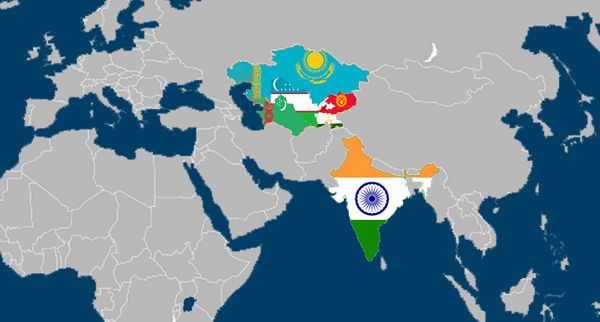- Courses
- GS Full Course 1 Year
- GS Full Course 2 Year
- GS Full Course 3 Year
- GS Full Course Till Selection
- MEP (Mains Enrichment Programme) Data, Facts
- Essay Target – 150+ Marks
- Online Program
- GS Recorded Course
- NCERT- First Ladder
- Polity
- Geography
- Economy
- Ancient, Medieval and Art & Culture AMAC
- Modern India, Post Independence & World History
- Environment
- Governance
- Science & Technology
- International Relations and Internal Security
- Disaster Management
- Ethics
- Current Affairs
- Indian Society and Social Issue
- CSAT
- 5 LAYERED ARJUNA Mentorship
- Public Administration Optional
- ABOUT US
- OUR TOPPERS
- TEST SERIES
- FREE STUDY MATERIAL
- VIDEOS
- CONTACT US
PM Jan Dhan Yojana has accelerated financial inclusion
PM Jan Dhan Yojana has accelerated financial inclusion

“PM Jan Dhan Yojana Has Accelerated Financial Inclusion, Reduced Inequalities” highlights the progress of the Pradhan Mantri Jan Dhan Yojana (PMJDY) in enhancing financial inclusion in India.
- Launched in 2014, PMJDY has seen significant growth, with over 53 crore accounts and increased average balances. The editorial underscores the need for further improvements in the financial ecosystem, expansion of financial products, and better consumer protection.
What is Financial Inclusion?
Definition: Financial inclusion is the process of ensuring access to necessary financial services for all individuals, particularly marginalized and low-income groups, at affordable costs. It encompasses a broad range of services, including banking, credit, insurance, and digital payments.
Scope:
- Access: Establishing physical and digital banking outlets in underserved areas.
- Affordability: Ensuring financial services are cost-effective for all segments of society.
- Financial Literacy: Educating individuals on financial management and products.
- Usage: Encouraging active engagement with financial services.
Importance of Financial Inclusion
- Economic Empowerment: Enhances financial management, saving, and access to credit, boosting economic activity and productivity.
- Poverty Reduction: Provides safe saving options and credit for investments in education, healthcare, and small businesses, aiding poverty alleviation.
- Formalization of the Economy: Reduces the shadow economy, improves transparency, tax collection, and economic policy implementation.
- Enhanced Financial Stability: Broadens the depositor and borrower base, contributing to a more stable financial system.
- Improved Government Service Delivery: Facilitates efficient and transparent implementation of direct benefit transfers and welfare schemes.
- Gender Equality: Promotes economic autonomy and decision-making power for women by providing independent financial access.
- Digital Transformation: Drives technological adoption, with potential spillover effects in other sectors.
- Social Inclusion: Enhances dignity and social inclusion for marginalized groups by integrating them into the formal economy.
Current State of Financial Inclusion in India
Overall Progress: Financial inclusion has improved significantly, with the percentage of adults having formal financial accounts increasing from approximately 50% in 2011 to over 80% in 2024.
Account Statistics:
- As of August 2024, there are 53.13 crore PMJDY accounts, up from 14.7 crore in March 2015.
- Public sector banks manage about 78% of these accounts.
- Women hold 55.6% of PMJDY accounts.
- 66.6% of accounts are in rural and semi-urban areas.
Digital Transactions:
- UPI transactions grew by 3.95% in volume and 2.84% in value in July 2024 compared to June.
Financial Inclusion Initiatives in India
Pradhan Mantri Jan Dhan Yojana (PMJDY):
- Provides zero-balance accounts, accident insurance, and overdraft facilities.
Micro-Insurance and Micro-Pension Schemes:
- PMSBY: Accident insurance with a premium of Rs 20 for Rs 2 lakh coverage.
- APY: Pension scheme for the unorganized sector.
Other Initiatives:
- PMVVY: Pension scheme for senior citizens.
- PMMY: Loans for small and micro enterprises.
- Stand Up India Scheme: Loans for SC/ST and women entrepreneurs.
- Venture Capital Fund for SCs: Financial support for SC entrepreneurs.
- Varishtha Pension Bima Yojana (VPBY): Pension scheme for senior citizens.
- Sukanya Samriddhi Yojana: Savings program for parents of girl children.
JAM Trinity: Jan Dhan (bank accounts), Aadhaar (biometric ID), Mobile (digital access): Enhances financial inclusion and service delivery efficiency.
Banking System Innovations:
- Payment Banks: Specialized for small savings and payments.
- Small Finance Banks: Focus on underserved segments.
- Priority Sector Lending: Mandated lending to specific sectors.
Digital Payments and FinTech:
- UPI: Enables instant bank transfers via mobile apps.
- BHIM: UPI-based app for basic smartphones.
- RuPay Cards: Domestic card network.
- AEPS: Uses Aadhaar for biometric transactions.
Microfinance Institutions (MFIs) and Self-Help Groups (SHGs):
- MFIs: Provide small loans to underserved populations.
- SHGs: Community-based savings and loan groups, with 12 million SHGs, 88% of which are women-only.
Financial Literacy Programs:
- FEPA: Financial education for adults.
- NCFE: Enhances financial literacy through various resources.
- Digital Financial Literacy Campaigns: Focus on digital banking and cybersecurity.
Challenges Associated with Financial Inclusion
- Digital Divide: Limited internet connectivity and digital infrastructure in remote areas.
- Financial Literacy: Low levels of financial literacy, particularly in rural areas.
- Gender Gap: Women face barriers due to social, economic, and cultural factors.
- Difficult KYC Norms: Challenges in providing necessary documentation, especially for informal sector workers.
- Last-Mile Connectivity: Irregular banking services and non-functional ATMs in remote areas.
- Credit Access for MSMEs: Difficulties in accessing formal credit due to lack of collateral and complex processes.
- Cybersecurity Concerns: Increased risk of digital fraud and cybersecurity issues.
Way Forward:
- Strengthen Digital Infrastructure: Expand internet connectivity and invest in telecom infrastructure.
- Enhance Financial Literacy Programs: Improve understanding of digital services and cybersecurity.
- Leverage Technology: Use blockchain, AI, and voice-based interfaces to overcome barriers.
- Focus on Women and Rural Populations: Tailor financial products and services to these groups and promote women-focused initiatives.
- Simplify KYC Norms: Implement video KYC and create unified systems.
- Strengthen Banking Correspondent Model: Improve training and monitoring for Banking Correspondents.
- Enhance Credit Histories and Data Sharing: Develop online credit systems and improve access to credit histories.
Conclusion
India’s journey towards financial inclusion has seen substantial progress through government initiatives and technological advancements. The Pradhan Mantri Jan Dhan Yojana (PMJDY) has played a pivotal role in expanding access to financial services, contributing to economic empowerment, poverty reduction, and improved service delivery. Despite significant achievements, challenges remain, particularly in digital infrastructure, financial literacy, and gender disparities. Moving forward, a focused effort to address these challenges, strengthen digital and financial literacy, and tailor solutions for underserved populations will be essential. Achieving comprehensive financial inclusion is crucial for ensuring equitable economic growth and empowering all citizens in India’s diverse and evolving financial landscape.
Must Check: Best IAS Coaching In Delhi
UPSC Prelims Result 2024 Out: Expected Cut Off & Other Details, UPSC Prelims 2024 Answer with Explanation, Daily Prelims Quiz, Daily Current Affairs, MONTHLY CURRENT AFFAIRS TOTAL (CAT) MAGAZINE, Best IAS Coaching Institute in Karol Bagh, Best IAS Coaching Institute in Delhi, Daily Mains Question Answer Practice, ENSURE IAS UPSC Toppers, UPSC Toppers Marksheet, Previous Year Interview Questions, UPSC Syllabus




